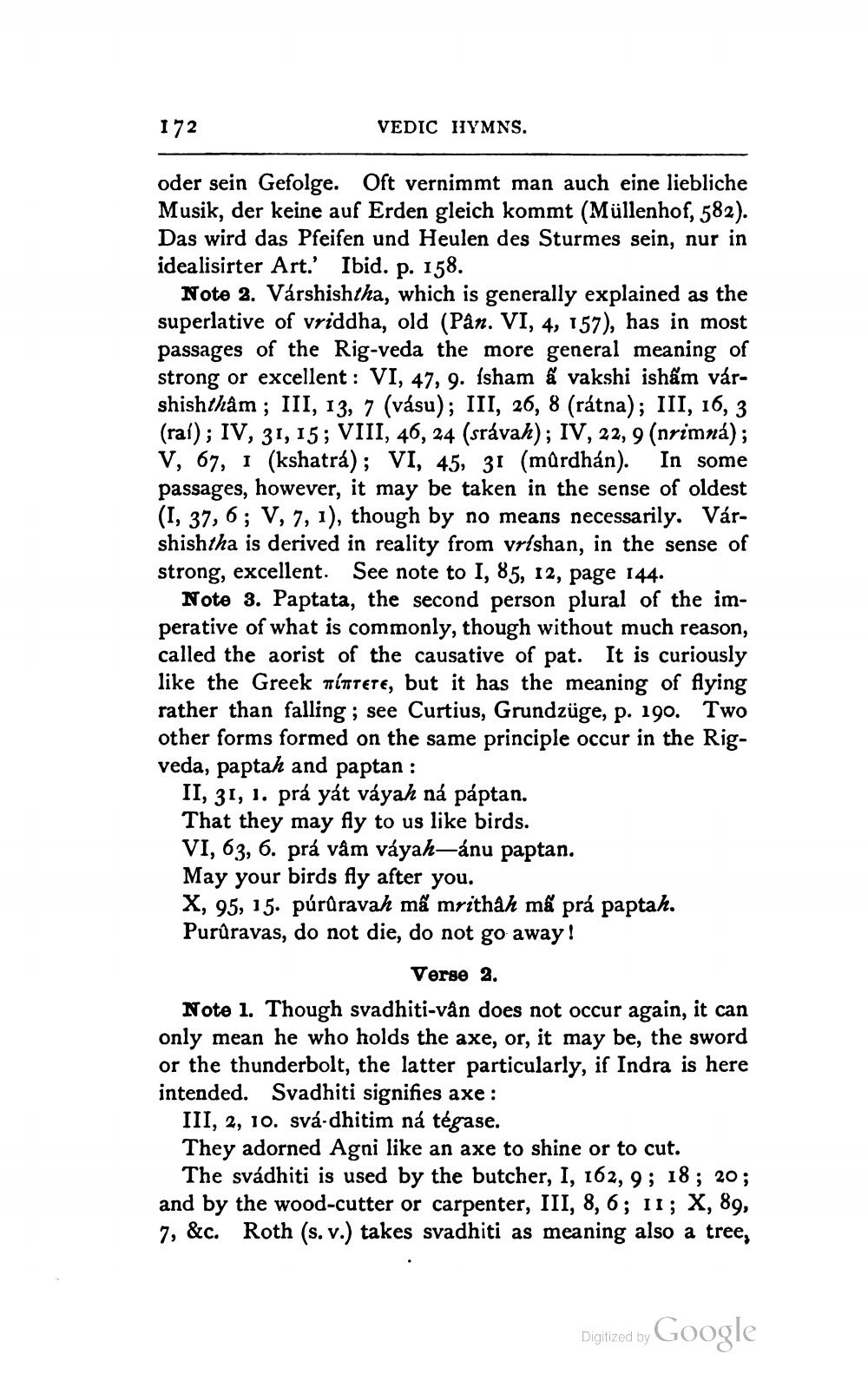________________
172
VEDIC HYMNS.
oder sein Gefolge. Oft vernimmt man auch eine liebliche Musik, der keine auf Erden gleich kommt (Müllenhof, 582). Das wird das Pfeifen und Heulen des Sturmes sein, nur in idealisirter Art.' Ibid. p. 158.
Note 2. Várshishtha, which is generally explained as the superlative of vriddha, old (Pån. VI, 4, 157), has in most passages of the Rig-veda the more general meaning of strong or excellent : VI, 47, 9. Isham å vakshi ishấm várshishthâm; III, 13, 7 (vásu); III, 26, 8 (rátna); III, 16, 3 (ral); IV, 31, 15; VIII, 46, 24 (srávah); IV, 22, 9 (nrimná); V, 67, i (kshatrá); VI, 45, 31 (mardhán). In some passages, however, it may be taken in the sense of oldest (I, 37, 6; V, 7, 1), though by no means necessarily. Várshishtha is derived in reality from vrlshan, in the sense of strong, excellent. See note to I, 85, 12, page 144.
Note 3. Paptata, the second person plural of the imperative of what is commonly, though without much reason, called the aorist of the causative of pat. It is curiously like the Greek Tiitete, but it has the meaning of flying rather than falling ; see Curtius, Grundzüge, p. 190. Two other forms formed on the same principle occur in the Rigveda, paptah and paptan :
II, 31, 1. prá yát váyah na páptan. That they may fly to us like birds. VI, 63, 6. prá vám váyah-ánu paptan. May your birds fly after you. X, 95, 15. púrdravah mã mrithâh má prá paptah. Purúravas, do not die, do not go away!
Verse 2. Note 1. Though svadhiti-vân does not occur again, it can only mean he who holds the axe, or, it may be, the sword or the thunderbolt, the latter particularly, if Indra is here intended. Svadhiti signifies axe:
III, 2, 10. svá.dhitim ná tégase. They adorned Agni like an axe to shine or to cut.
The svádhiti is used by the butcher, I, 162, 9; 18; 20; and by the wood-cutter or carpenter, III, 8, 6; II; X, 89, 7, &c. Roth (s. v.) takes svadhiti as meaning also a tree,
Digitized by
Digized by Google




